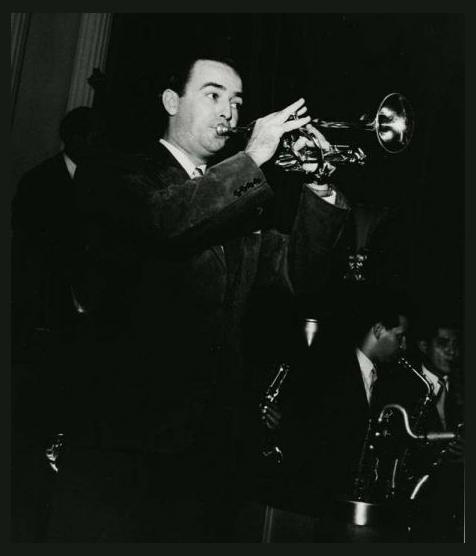 Glenn Miller
Glenn Miller
Genesis of a Musical Icon: Glenn Miller and His Orchestra
In the golden age of swing, a musical band emerged that would forever etch its name into the annals of jazz history: Glenn Miller and His Orchestra. With their signature sound, enchanting melodies, and unparalleled precision, they captivated audiences worldwide.
The Maestro at the Helm: Glenn Miller
Glenn Miller, the driving force behind the orchestra, was a visionary bandleader and arranger. Born in Clarinda, Iowa, in 1904, his early musical experiences shaped his innate talent and unwavering determination. After graduating from the University of Colorado, Miller embarked on a musical odyssey that would lead him to the pinnacle of success.
Challenges and Controversies: A Journey Defined by Resilience
The path to stardom was not without its obstacles. In 1938, Miller's first band suffered financial setbacks and disbanded. Undeterred, he regrouped and formed a new ensemble in 1939, which quickly gained national recognition. However, the band's meteoric rise was met with controversy. Critics accused them of playing "too commercial" music, diluting the purity of jazz. Miller stood firm, believing that his music transcended genre boundaries and brought joy to countless listeners.
A Tapestry of Melodious Masterpieces: The Orchestra's Discography
Glenn Miller and His Orchestra's musical legacy is a testament to their exceptional artistry. Their discography boasts an array of timeless classics, including:
* "Moonlight Serenade" (1939)
* "In the Mood" (1940)
* "Tuxedo Junction" (1940)
* "A String of Pearls" (1941)
* "Chattanooga Choo Choo" (1941)
These songs not only defined an era but also continue to resonate with audiences today.
The Orchestra's Star-Studded Ensemble
Glenn Miller's Orchestra was a melting pot of talented musicians, each contributing their unique talents to the ensemble's sound. Notable members included:
* Tex Beneke: Tenor saxophone and lead vocalist
* Ray Eberle: Baritone saxophone and vocalist
* Marion Hutton: Vocalist
* Alvino Rey: Guitar
* Barney Bigard: Clarinet
A Legacy Intertwined with War and Peace
The outbreak of World War II had a profound impact on Glenn Miller and His Orchestra. In 1942, Miller enlisted in the U.S. Army Air Forces, leaving the band in the capable hands of his colleagues. Tragically, Miller's plane disappeared over the English Channel in 1944, leaving an unfillable void in the music world.
Despite his untimely demise, Glenn Miller's legacy lives on through his timeless music. His Orchestra continued to perform and tour for many years, ensuring that the spirit of swing would endure for generations to come.
Conclusion
Glenn Miller and His Orchestra's contribution to the world of music is immeasurable. Their innovative sound, memorable melodies, and relentless pursuit of excellence have cemented their place in the pantheon of musical legends. The orchestra's legacy continues to inspire and enchant audiences, reminding us of the transformative power of music.
In the golden age of swing, a musical band emerged that would forever etch its name into the annals of jazz history: Glenn Miller and His Orchestra. With their signature sound, enchanting melodies, and unparalleled precision, they captivated audiences worldwide.
The Maestro at the Helm: Glenn Miller
Glenn Miller, the driving force behind the orchestra, was a visionary bandleader and arranger. Born in Clarinda, Iowa, in 1904, his early musical experiences shaped his innate talent and unwavering determination. After graduating from the University of Colorado, Miller embarked on a musical odyssey that would lead him to the pinnacle of success.
Challenges and Controversies: A Journey Defined by Resilience
The path to stardom was not without its obstacles. In 1938, Miller's first band suffered financial setbacks and disbanded. Undeterred, he regrouped and formed a new ensemble in 1939, which quickly gained national recognition. However, the band's meteoric rise was met with controversy. Critics accused them of playing "too commercial" music, diluting the purity of jazz. Miller stood firm, believing that his music transcended genre boundaries and brought joy to countless listeners.
A Tapestry of Melodious Masterpieces: The Orchestra's Discography
Glenn Miller and His Orchestra's musical legacy is a testament to their exceptional artistry. Their discography boasts an array of timeless classics, including:
* "Moonlight Serenade" (1939)
* "In the Mood" (1940)
* "Tuxedo Junction" (1940)
* "A String of Pearls" (1941)
* "Chattanooga Choo Choo" (1941)
These songs not only defined an era but also continue to resonate with audiences today.
The Orchestra's Star-Studded Ensemble
Glenn Miller's Orchestra was a melting pot of talented musicians, each contributing their unique talents to the ensemble's sound. Notable members included:
* Tex Beneke: Tenor saxophone and lead vocalist
* Ray Eberle: Baritone saxophone and vocalist
* Marion Hutton: Vocalist
* Alvino Rey: Guitar
* Barney Bigard: Clarinet
A Legacy Intertwined with War and Peace
The outbreak of World War II had a profound impact on Glenn Miller and His Orchestra. In 1942, Miller enlisted in the U.S. Army Air Forces, leaving the band in the capable hands of his colleagues. Tragically, Miller's plane disappeared over the English Channel in 1944, leaving an unfillable void in the music world.
Despite his untimely demise, Glenn Miller's legacy lives on through his timeless music. His Orchestra continued to perform and tour for many years, ensuring that the spirit of swing would endure for generations to come.
Conclusion
Glenn Miller and His Orchestra's contribution to the world of music is immeasurable. Their innovative sound, memorable melodies, and relentless pursuit of excellence have cemented their place in the pantheon of musical legends. The orchestra's legacy continues to inspire and enchant audiences, reminding us of the transformative power of music.